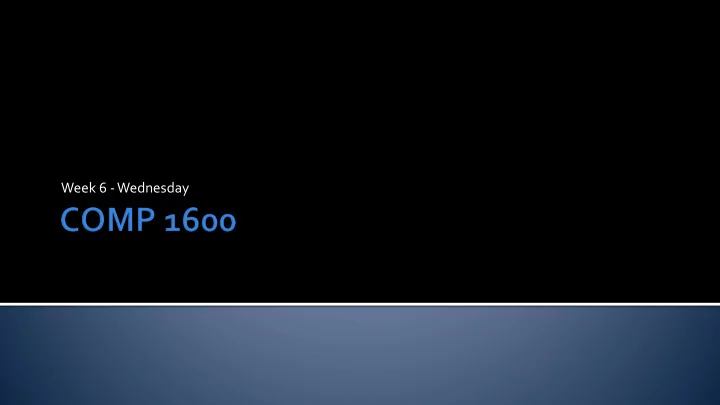

Week 6 -Wednesday
What did we talk about last time? Light Material Sensors
In general, sensors are made up of many tiny sensors Rods and cones in the eye Photodiodes attached to a CCD in a digital camera Dye particles in traditional film Typically, an aperture restricts the directions from which the light can come Then, a lens focuses the light onto the sensor elements
Irradiance sensors can't produce an image because they average over all directions Lens + aperture = directionally specific Consequently, the sensors measure radiance ( L ), the density of light per flow area AND incoming direction
In a rendering system, radiance is computed rather than measured A radiance sample for each imaginary sensor element is made along a ray that goes through the point representing the sensor and point p , the center of projection for the perspective transform The sample is computed by using a shading equation along the view ray v
After all this hoopla is done, we need a mathematical equation to say what the color (radiance) at a particular pixel is There are many equations to use and people still do research on how to make them better Remember, these are all rule of thumb approximations and are only distantly related to physical law
Diffuse exitance M diff = c diff ⊗ E L cos θ Lambertian (diffuse) shading assumes that outgoing radiance is (linearly) proportional to irradiance Because diffuse radiance is assumed to be the same in all directions, we divide by π (explained later) c π ⊗ Final Lambertian radiance L diff = diff E cos θ L
Specular shading is dependent on the angles between the surface normal to the light vector and to the view vector For the calculation, we compute h , the half vector half between v and l + l v = h + l v
The total specular exitance is almost exactly the same as the total diffuse exitance: M spec = c spec ⊗ E L cos θ What is seen by the viewer is a fraction of M spec dependent on the half vector h Final specular radiance + m 8 L spec = ⊗ m cos φ c E cos θ h spec L 8 π Where does m come from? It's the smoothness parameter
Final lighting is: + n c m 8 ∑ = + φ ⊗ m diff L ( v ) cos c E cos θ π π h spec L i 8 i = i 1 We want to implement this in shaders The book goes into detail about how often it is computed Note that many terms can be precomputed, only the ones with angles in them change
Computing the shading equation more often gives better visual results but takes more time Flat shading Computes shading equation once per primitive Gouraud shading Computes shading equation once per vertex, linearly interpolates color for pixel values Phong shading Computes color per pixel
When sampling any continuous thing (image, sound, wave) into a discrete environment (like the computer), multiple samples can end up being indistinguishable from each other This is called aliasing We can reduce aliasing by carefully considering how sampling and reconstruction of the signal is done
Ever seen wheels of a car spinning the wrong way? Without enough samples, it may be impossible to tell which way it's spinning You need a sampling frequency twice as high as the maximum frequency of the events to reconstruct the original signal Called the Nyquist limit
Review for Exam 1 Review all material covered so far Exam 1 is next Monday in class
Finish Assignment 2, due this Friday Keep working on Project 2, due Friday, November 1 Review Chapters 1 – 4 and Appendices A and B
Recommend
More recommend